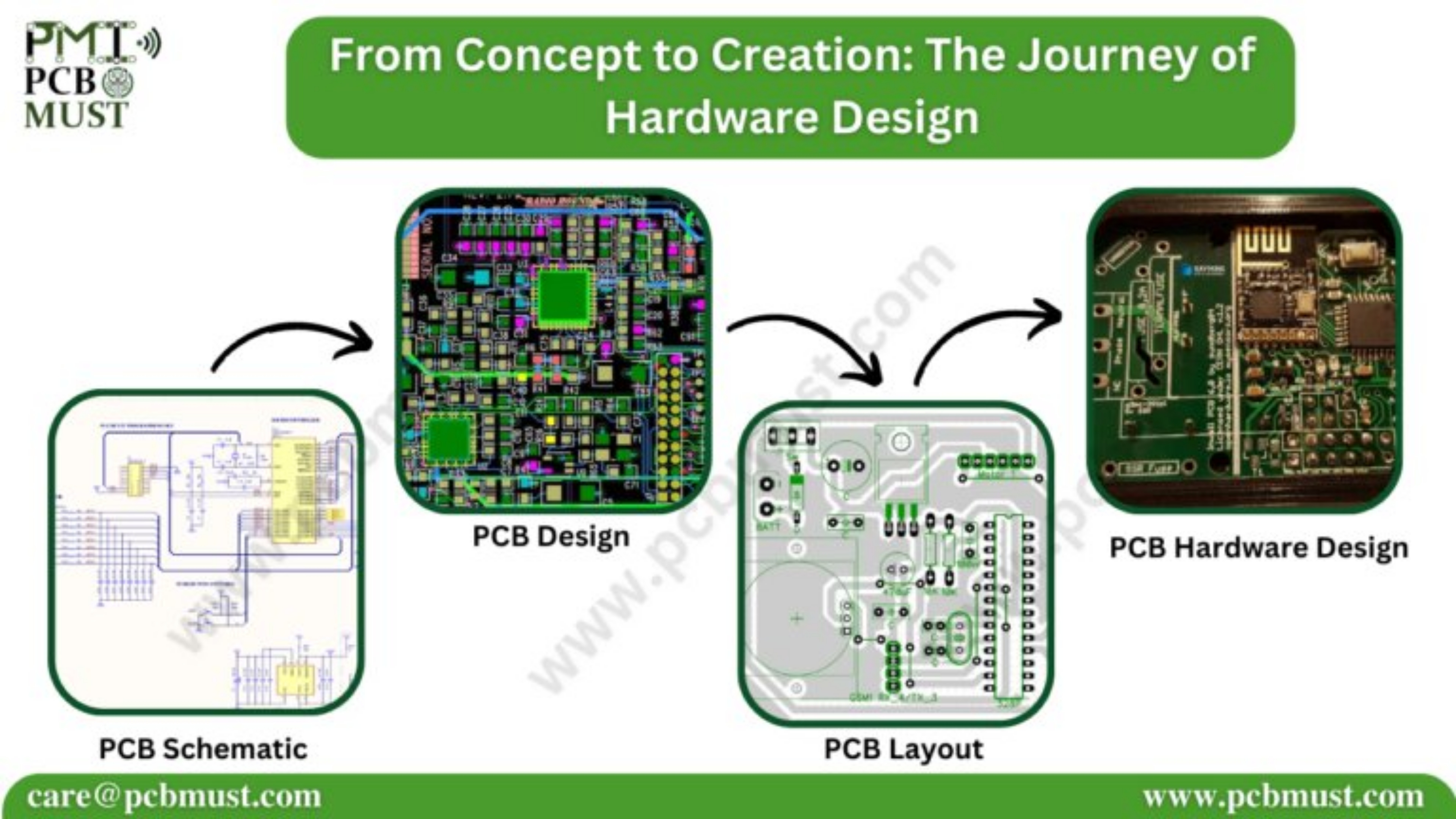Introduction:
In the ever-evolving world of technology, hardware design stands as a fundamental pillar in bringing innovative and groundbreaking products to life. It encompasses the entire process of transforming an abstract concept into a tangible, functional device. From the initial spark of an idea to the final product hitting the market, hardware design involves a myriad of stages and factors that contribute to the success of a device. In this blog, we will explore the fascinating journey of hardware design, delving into its benefits and other important factors that shape this intricate process.

Benefits of Hardware Design:
1. Innovation and Creativity: At the heart of hardware design lies the ability to innovate and unleash creativity. It provides engineers and designers with a platform to explore new solutions to real-world problems. By pushing the boundaries of what is possible, hardware design leads to the development of cutting-edge products that revolutionize industries and improve people’s lives. Through hardware design, novel features and functionalities can be incorporated into devices, providing unique user experiences and setting new industry standards.
2. Customization and Optimization: Hardware design allows for customization and optimization of devices to meet specific requirements. Designers can tailor the hardware components, circuitry, and architecture to achieve desired performance, power efficiency, and form factor. This flexibility enables the creation of devices that cater to diverse user needs, whether it’s a compact wearable device or a high-performance server. By optimizing hardware design, engineers can enhance functionality, reduce power consumption, and optimize space utilization.
3. Integration and Connectivity: In our increasingly interconnected world, hardware design plays a crucial role in enabling seamless integration and connectivity among various devices. Designers need to consider the compatibility of hardware components, protocols, and interfaces to ensure smooth communication between different systems. Well-designed hardware facilitates the integration of sensors, actuators, wireless modules, and other technologies, enabling devices to interact with each other and the surrounding environment effectively. This connectivity opens up endless possibilities for automation, IoT applications, and smart ecosystems.
4. Reliability and Robustness: Hardware design focuses on creating devices that are reliable and robust in various operating conditions. Designers carefully select and test components to ensure their durability, stability, and resilience to external factors such as temperature, humidity, and vibration. Through meticulous design and testing, hardware engineers can create products that withstand the challenges of real-world usage. Robust hardware design enhances user satisfaction and trust in the brand, while also reducing product failures and warranty claims.
5. Cost Optimization: Hardware design plays a crucial role in optimizing manufacturing costs. By carefully selecting components, simplifying circuitry, and optimizing production processes, designers can reduce material costs and improve manufacturing efficiency. Additionally, thoughtful design choices can lead to easier assembly, maintenance, and repair processes, resulting in cost savings throughout the product’s lifecycle. Cost optimization enables companies to offer competitive pricing while maintaining profitability.
Other Factors in Hardware Design:
1. Prototyping and Testing: Prototyping is an integral part of the hardware design process. It involves building a physical model or a small batch of devices to evaluate the design’s feasibility, functionality, and performance. Prototyping helps identify design flaws and allows for iterative improvements before mass production. Rigorous testing, including functionality tests, stress tests, and compatibility tests, ensures that the final product meets quality standards and user expectations. Prototyping and testing reduce the risk of design flaws and ensure a smooth transition from concept to market-ready product.
2. Design for Manufacturing (DFM): Design for Manufacturing (DFM) is a critical consideration in hardware design. It involves designing products with manufacturability in mind, optimizing the design for efficient production processes. DFM focuses on factors such as component availability, ease of assembly, and cost-effective manufacturing techniques. Collaborating closely with manufacturers during the design phase helps streamline the transition from concept to mass production. By designing for manufacturability, companies can reduce production costs, minimize time-to-market, and ensure consistent product quality.
3. Regulatory Compliance: Hardware design must adhere to regulatory and industry standards to ensure the safety, reliability, and compatibility of devices. Designers need to consider factors such as electromagnetic compatibility (EMC), safety certifications, environmental regulations, and wireless communication standards. Compliance with these standards not only ensures the product’s marketability but also guarantees its compatibility with other devices and user safety. Understanding and adhering to regulatory requirements early in the design process helps avoid costly redesigns and delays during product certification.
4. User Experience (UX) Design: Hardware design goes beyond functionality; it encompasses user experience design. Designers need to consider ergonomic factors, aesthetics, intuitive controls, and ease of use to create devices that provide a seamless and delightful user experience. Attention to detail in the physical design, user interface, and overall interaction design significantly impacts the perception and adoption of a product. By designing with the end-user in mind, companies can differentiate their products, build brand loyalty, and create a positive impact on users’ lives.
Conclusion:
From concept to creation, hardware design embarks on a complex and fascinating journey that combines innovation, technical expertise, and meticulous attention to detail. The benefits of hardware design, including innovation, customization, integration, reliability, and cost optimization, are instrumental in shaping the technological landscape. By understanding and embracing the challenges and opportunities of hardware design, engineers and designers can bring forth remarkable devices that push the boundaries of what is possible and enhance the way we live, work, and interact with technology. The journey of hardware design is a testament to human ingenuity and the relentless pursuit of progress in shaping a better future.
About the Author:
Avi Gupta, Founder of PCB Must Innovations, is a dynamic force in the world of electronics design. With a wealth of industry experience, Avi thrives on solving intricate problems and delivering dependable solutions. A tech enthusiast, Avi stays ahead of trends while cherishing precious moments with family.
Avi could be reached at care@pcbmust.com
 Avi Gupta
Avi Gupta
Discussions
Become a Hackaday.io Member
Create an account to leave a comment. Already have an account? Log In.